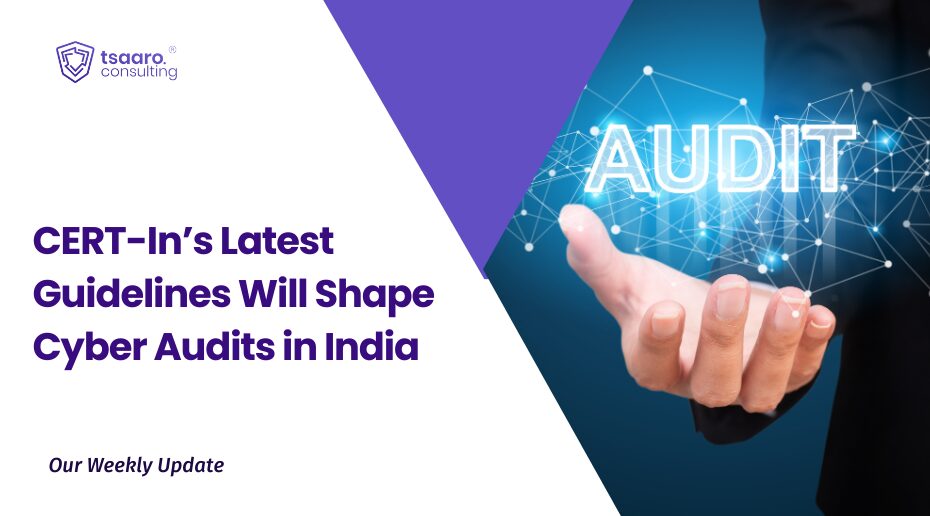Introduction
A Transfer Impact Assessment (TIA) is a critical evaluation conducted under the General Data Protection Regulation (GDPR) to assess the risks associated with transferring personal data to a third country that does not have an adequacy decision. The primary goal of a TIA is to ensure that personal data transferred outside the European Economic Area (EEA) enjoys an “essentially equivalent” level of protection as required under GDPR.
This requirement became particularly significant after the Schrems II ruling by the Court of Justice of the European Union (CJEU), which stated that the EU-U.S. Privacy Shield was not valid due to the shortcomings present in the US national security laws, which provide far reaching powers to intelligence services in the country to access the data that it stored within the US. The judgement further reinforced the need for organizations to verify the adequacy of protection in the recipient country.
The Commission nationale de l’informatique et des libertés (CNIL), which is the French data protection authority, has published a Practical Guide on Transfer Impact Assessments (guide), with the aim of assisting organizations which transfer data outside the EEA.
We will analyse this Guide in our blog.
Why is a TIA Done?
A ‘Transfer Impact Assessment’ is a risk assessment used for the purposes of transferring personal data from the EU to certain non-EU countries. A Transfer Impact Assessment is needed to make sure that when personal data of individuals in the EU is transferred outside of the EU, it’s still protected in the same way it needs to be protected under the GDPR. A TIA is performed to determine whether the safeguards in place—such as Standard Contractual Clauses (SCCs) or Binding Corporate Rules (BCRs)—are sufficient to ensure compliance with GDPR principles when transferring data to a third country and to assess and document whether the importer of the data will be able to meet with obligations as set out in the transfer tools provided by the GDPR. According to GDPR, any transfer of personal data must be governed by appropriate safeguards that guarantee data subject rights and protect against unauthorized access by third parties, including foreign governments. If the recipient country’s legal framework allows excessive government surveillance or does not provide enforceable data protection rights, the data exporter must identify supplementary measures to mitigate such risks.
When is a TIA Not Necessary?
A TIA is not required when personal data is transferred to a country that has been granted an adequacy decision by the European Commission, meaning its data protection laws align closely with the GDPR. The Commission follows the rules set out under Article 45 of the GDPR for determining if the third country offers sufficient protections in the handling of the data of EU citizens. The Commission has an obligation to periodically review (every 4 years as per A.45(3) of the GDPR) if the third country is offering adequate levels of protection and consider any and all recent developments in the said country.
Similarly, transfers that occur within the EEA do not require an assessment, as all member states are bound by GDPR regulations. Additionally, certain derogations under GDPR (A.49) allow for data transfers without a full TIA, such as when the transfer is based on explicit consent from the data subject, necessary for contract performance, or required for important public interest reasons. However, these derogations are intended for exceptional cases and should not be used as a standard transfer mechanism.
Conducting a Transfer Impact Assessment (TIA)
The guide highlights that Transfer Impact Assessment ensures personal data transferred outside the European Economic Area (EEA) remains protected at a level equivalent to that within the EU. Conducting a TIA involves several steps, which include identifying the type of transfer, selecting an appropriate transfer tool under Article 46 of the GDPR, and assessing the legislation and practices of the destination country.
- Identifying the Type of Transfer
Before conducting a TIA, the exporter must understand the type of transfer by determining the nature of the data, the parties involved, and the context in which the transfer occurs. This includes identifying whether the exporter is a controller or processor and whether the importer is a controller or processor as per the GDPR. The role of each entity determines their respective responsibilities under the GDPR.
The exporter must also establish the type of data being transferred, including whether it involves special categories of personal data as defined in Article 9 of the GDPR. Additionally, the method of transfer—such as remote access, direct transmission, or local storage—must be documented, as different methods pose varying levels of risk.
- Selecting the Appropriate Transfer Tool
Once the transfer is fully understood, the next step is selecting a suitable transfer tool under Article 46 of the GDPR. The available tools include:
Standard Contractual Clauses (SCCs): These are pre-approved contractual obligations that ensure adequate data protection when transferring personal data outside the EEA.
Binding Corporate Rules (BCRs): Used for intra-group transfers within multinational organizations, BCRs provide legally binding internal policies that meet GDPR requirements.
Codes of Conduct and Certification Mechanisms: These allow data transfers under specific industry standards that guarantee adequate protection.
Ad hoc Contractual Clauses: Custom agreements that must be individually approved by a Data Protection Authority.
The exporter must document the chosen transfer tool and justify its effectiveness for the specific transfer.
- Assessing the Legislation and Practices of the Destination Country
The assessment of the transfer and selection of the appropriate transfer tool under Article 46 of the GDPR leads to the process of evaluating whether the legal framework and practices in the third country which may impact the effectiveness of the chosen safeguards. This assessment must be tailored to the specific transfer, focusing on laws governing data protection, government surveillance, and judicial redress mechanisms.
The Schrems II judgement reiterated that the third country need not have identical protections as the EU, but the protections offered should be “essentially same”, thus this assessment is there to ensure that the protections offered under the GDPR travel with the data of EU citizens. The analysis should begin with reviewing relevant legislation applicable to the data importer and the scope of powers granted to public authorities for accessing personal data. However, examining legislation alone is insufficient-practical enforcement and real-world governmental practices must also be considered. If laws are formally in place but widely ignored or inconsistently enforced, the assessment must account for this discrepancy.
The practical application of these laws is particularly relevant when:
- The third country has laws that formally meet EU data protection standards but are not applied or enforced effectively in practice. However, this can raise a concern that the intended safeguards of the transfer tool may not be operational.
- There are governmental surveillance practices that conflict with the commitments outlined in the chosen transfer tool. This in itself became the basis for the Schrems II judgement, when the US national security laws came in conflict with the EU’s data protection laws. In cases where no clear legislation exists, but intrusive practices are documented, the effectiveness of the safeguards may be compromised.
- The transferred data and/or the data importer fall within the scope of problematic laws. If the recipient country’s laws enable disproportionate access to personal data that contradicts EU standards on necessity and proportionality, this can undermine the contractual guarantees provided by the chosen transfer mechanism.
If any of the above conditions apply, the data exporter must decide whether to:
- Suspend the transfer altogether if there is a high risk that the data will not receive adequate protection.
- Implement supplementary measures to mitigate these risks before proceeding with the transfer.
- Proceed without supplementary measures only if there is strong, documented evidence that problematic laws or practices do not, in practice, apply to the specific data being transferred.
To ensure a thorough assessment, exporters should refer to the EDPB’s European Essential Guarantees, which outline key criteria for evaluating government access to data for surveillance purposes.
- Adopting Supplementary Measures
The next step is to find and put into place additional measures if the legal examination shows that the third country’s laws or practices affect how well the Article 46 transfer instrument works. These extra precautions, according to the guide, which may include a mix of organizational, contractual, and technical controls, must be customized to the risks that have been identified. Some examples of supplementary measures include:
- Technical Measures
- End-to-end encryption, ensuring that only authorized parties can access the data.
- Pseudonymization, where data is altered in a way that it can no longer be linked to an individual without additional information held separately.
- Data minimization strategies, reducing the amount of personal data transferred.
- Additional Contractual Measures
- Strengthening data processing agreements to impose additional obligations on the importer.
- Requiring the importer to challenge or refuse any unlawful government data access requests.
- Organizational Measures
- Establishing strict internal policies for managing and responding to access requests.
- Conducting regular audits of the data importer’s compliance with contractual obligations.
It is important to remember that not all additional measures will work in every jurisdiction. The type of transfer and the legislations present in the third nation will determine their success. The exporter shall prevent the transfer of data if none of the processes present in the GDPR can guarantee a sufficient degree of protection. Supervisory authorities may ask for an explanation of the actions taken. Therefore, this decision should be thoroughly documented.
4. Reassessing and Monitoring the Transfer
Conducting a TIA is not a one-time obligation but a continuous process. Exporters must, as the guide highlights, regularly review their assessments and monitor any developments in the recipient country that may affect the adequacy of protection. The exporter must ensure that changes in legislation, court rulings, or new government surveillance practices have not affected any of the implemented transfer tools.
The principle of accountability under the GDPR requires ongoing vigilance to ensure compliance. Supervisory authorities, such as the CNIL and other EU regulators, retain the power to suspend or prohibit data transfers if an essentially equivalent level of protection cannot be ensured. Organizations must be prepared to demonstrate the steps they have taken to maintain compliance.
By following these improved steps-identifying the transfer type, selecting the correct transfer tool, assessing third-country laws and practices, implementing necessary supplementary measures, and continuously monitoring changes-organizations can ensure that their international data transfers align with GDPR requirements while minimizing risks to data subjects.
Existing Guidelines on TIAs
The European Data Protection Board (EDPB) has issued Recommendations 01/2020, which outline a six-step process for conducting a TIA, including identifying the transfer mechanism, assessing the third country’s laws, and determining the necessity of supplementary measures. Additionally, the European Commission’s 2021 update to SCCs introduced an obligation for data exporters to assess the recipient country’s legal environment before proceeding with the transfer. National regulators such as the French CNIL also provide guidance on best practices for ensuring compliance with GDPR when conducting international transfers.
Responsibilities of the Data Exporter
Wherever a Transfer Impact Assessment is mandated, the data exporter bears the responsibility of performing a comprehensive examination of the recipient country’s legal and regulatory framework. This analysis should be carried out carefully, with all findings thoroughly documented to demonstrate whether the chosen transfer tools provide sufficient protection for the data being sent to a third country. If the selected mechanism falls short, the documentation should clearly explain the additional safeguards put in place to mitigate any remaining risks and ensure the rights of data subjects are upheld.
The exporter is further obligated to engage in ongoing monitoring of legal and regulatory developments within the recipient jurisdiction. Should material changes arise that affect the level of data protection, a prompt reassessment of adequacy must be undertaken. If safeguards are subsequently deemed inadequate, the exporter is required to either implement enhanced protective measures or discontinue the data transfer entirely.
Data protection authorities retain the authority to request access to TIA documentation during audits or investigations to verify adherence to compliance obligations. Consequently, maintaining detailed, up-to-date records is critical to demonstrating conformity with applicable legal requirements and facilitating regulatory oversight. This structured approach ensures continuous accountability and alignment with evolving data protection standards.
Conclusion
A Transfer Impact Assessment is a fundamental requirement for ensuring GDPR compliance in international data transfers. Organizations must carefully evaluate the legal frameworks present in any third country or international organization, implement necessary safeguards, and maintain ongoing oversight to uphold data subject rights.
By following guidance from the EDPB, CNIL, and the European Commission, data exporters can navigate the complexities of cross-border data flows while mitigating the risks associated with transferring personal data outside the EEA.
Tsaaro Consulting, in collaboration with PSA Legal Counsellors and Advertising Standards Council of India, has authored a whitepaper titled ‘Navigating Cookies: Recalibrating Your Cookie Strategy in Light of the DPDPA’. If you want to learn more about cookie consent management, read the whitepaper by clicking here.
The Ministry of Electronics and Information Technology (MeitY) has released the Draft DPDP Rules, 2025 for Public Consultation!
Learn more about the Draft Rules here:












